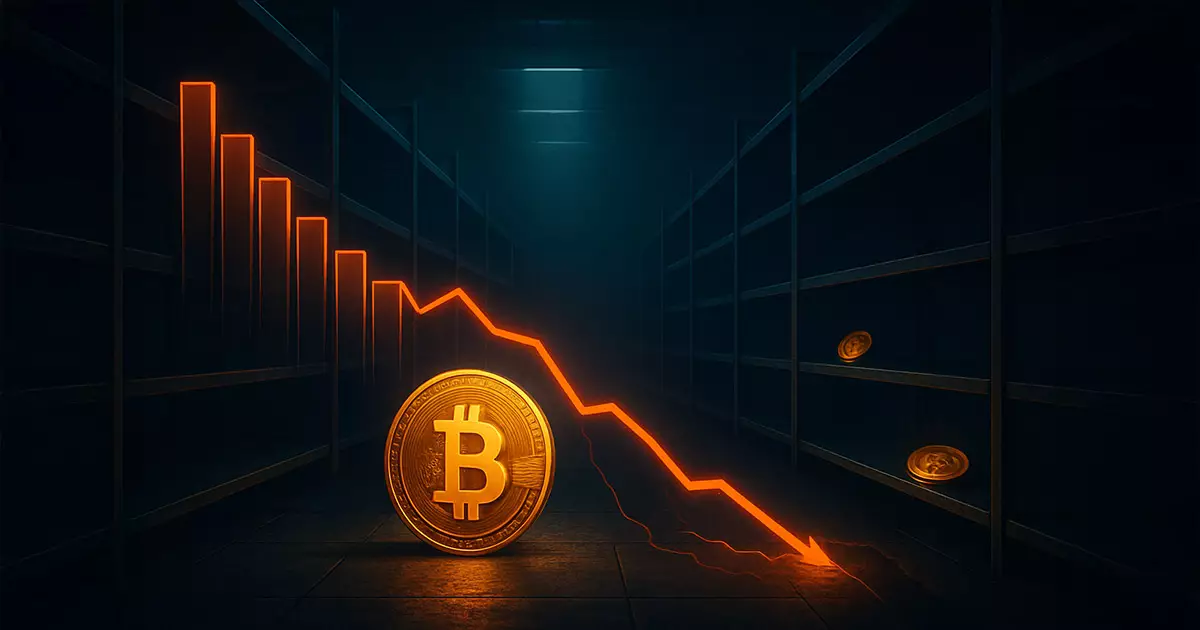In an alarming yet exhilarating development for Bitcoin investors and enthusiasts alike, the supply of Bitcoin on centralized exchanges has plummeted to levels not witnessed since 2019. As of late April 2025, approximately 2.5 million BTC remain on these platforms, indicating a decrease of 500,000 coins since the close of 2024. This decline is not merely a statistical anomaly; it signals a significant behavioral shift among investors, who are increasingly removing their funds from exchanges and opting for self-custodial wallets. The trend towards long-term holding, or “HODLing” as the community lovingly calls it, epitomizes a broader, perhaps more mature perspective on Bitcoin as a financial asset.
The movement of Bitcoin into private custody is reflective of a decisive pivot in investor psychology. It seems that both retail and institutional players are now skeptical of the liquidity offered by exchanges, opting instead for security. The influx of institutional demand, highlighted by firms like Fidelity purchasing $253 million worth of BTC, amplifies this sentiment. This raises an intriguing question: Is Bitcoin transitioning from a speculative vehicle to a recognized store of value, akin to gold?
The Forces Behind the Bitcoin Exodus
Data from CryptoQuant reveals a steady decline in Bitcoin reserves on exchanges, a trend that began back in early 2023 when exchanges held around 3.2 million BTC. The situation has escalated rapidly, further fueled by institutional heavyweights entering the market. Fidelity’s recent activities showcase a growing trend where institutions are not only buying but withdrawing Bitcoin from exchanges—a clear indication of their commitment to long-term investment strategies. There’s no denying that we stand on the brink of a supply crunch, potentially reshaping the very fabric of Bitcoin’s market dynamics.
Such behavioral changes among investors can indeed signal a maturation of the crypto market. As institutional players wrestle with macroeconomic uncertainty and consider Bitcoin for portfolio diversification, it dwells in a space that was once dominated by retail speculation. Individuals who once viewed Bitcoin through a lens of volatility are now starting to see it as a strategic asset that deserves a place alongside traditional financial instruments.
Market Implications of the Shrinking Supply
The implications of dwindling Bitcoin supply on exchanges extend beyond mere numbers; they create a formidable backdrop for price dynamics. The reduced availability of Bitcoin for immediate sale diminishes the risk of large sell-offs, which frequently disrupt market stability. Moreover, the combination of reduced supply with increasing demand could set the stage for a supply shock, a phenomenon that history has shown can lead to substantial price surges.
What is particularly noteworthy is that over three-quarters of institutional investors plan to amplify their digital asset allocations in 2025, as revealed by a recent Coinbase survey. This fervent enthusiasm indicates a collective acknowledgment of Bitcoin’s potential as a hedge against economic disarray. Publicly traded companies have also recognized this opportunity—since November 2024, institutions have withdrawn 425,000 BTC from exchanges, further depleting available supply.
The Path Ahead: Potential for Volatility or Stability?
While the current landscape appears bullish, it is essential to recognize the implications of heightened demand coupled with constrained supply. Any unexpected surge in interest could trigger significant price oscillations, leading to a rollercoaster ride for both seasoned and novice investors. Analysts like Willy Woo argue that BTC fundamentals have turned undeniably bullish, a sentiment echoed by various market observers. Yet, it is evident that volatility remains an inescapable characteristic of the Bitcoin market, and various urgent macroeconomic variables are constantly at play.
The noticeable shift towards self-custody represents evolving investor behavior—that Bitcoin isn’t merely a fleeting trend of wealth generation but a serious asset class deserving meticulous attention and care. The implications of this transformation can’t be overstated; it speaks volumes about the increasing sophistication of market participants and highlights their long-term vision for Bitcoin.
As we stand at this critical juncture, it becomes crucial to maintain vigilance over market sentiments, regulatory shifts, and macroeconomic developments. Whether this supply crunch will indeed catalyze the next leg of Bitcoin’s rally is still up for debate, but one thing is crystal clear: Bitcoin’s future may be more promising than ever amidst these seismic shifts.
















Leave a Reply